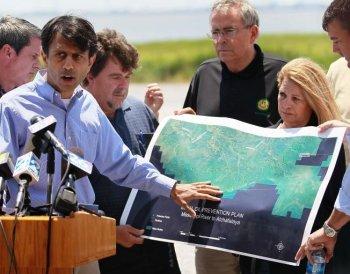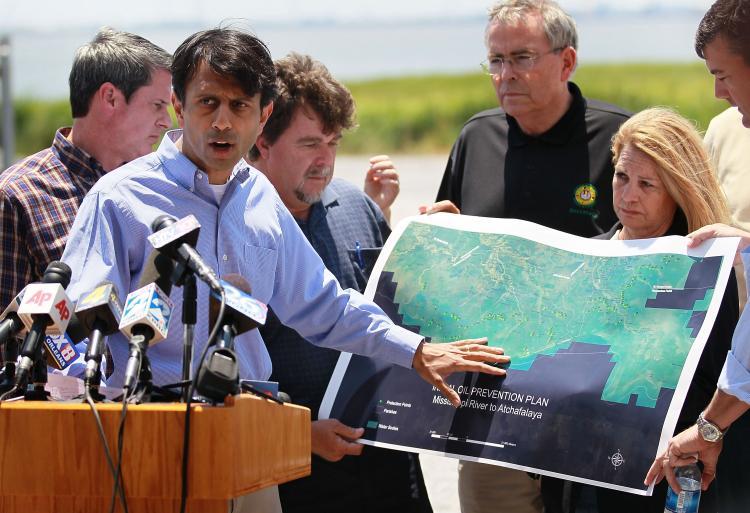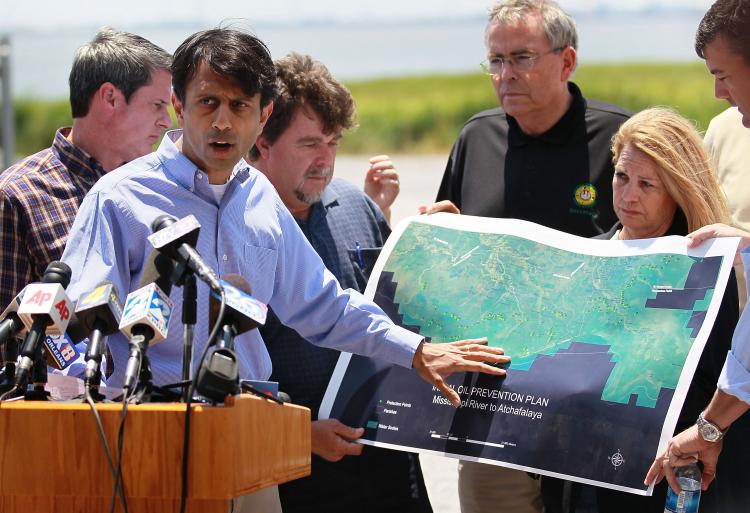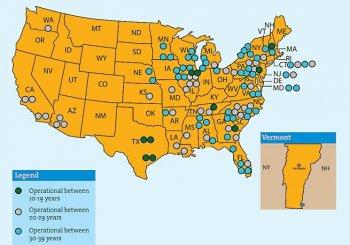BP’s Oil Spill Latest: Small Containment Dome
BP officials announced new set of shaky plans for dealing with the crisis. The primary one is a “top hat,” a smaller dome.

Oil Spill: Louisiana Governor Bobby Jindal points to a map showing the areas that might be affected by BP's massive oil spill as he meets with the media on May 10, in Lafourche Parish, Louisiana. Joe Raedle/Getty Images
|Updated:



